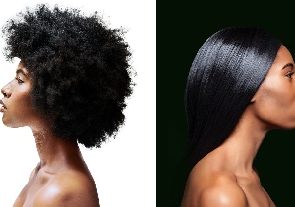Hair product use remains a hair treatment practice prevalent among women in Europe and the United States, with about 50% reporting ever using permanent hair dye. It is the most common exposure route to various endocrine-disrupting chemicals (EDCs).
Credible evidence from previous epidemiologic studies has shown that chemicals in hair straighteners can increase the risk of breast and ovarian cancer. However, other hair products, including permanent dyes, semi-permanent dyes, temporary dyes, bleach, highlights, and hair permanents did not correlate with uterine cancer.
A recent publication of the research of a team from the National Institutes of Health in the Journal of the National Cancer Institute indicated that women who applied chemical hair straightening products have a higher risk of uterine cancer than women who reported not using chemical hair products.
The examination of 33,947 Sister Study participants aged 35-74 years, over an average of 10.9 years of follow-up, recorded 378 cases of uterine cancer attributed to the use of hair products.
The population size of the study consisted of 7.4% Black/African American, 4.4% Hispanic/Latina non-Black, 85.6% non-Hispanic White, and 2.5% of all other races and ethnicity. 59.9% of African American/Black participants in the study were the most to have used hair straighteners.
Constant exposure to excess estrogen and a hormonal imbalance of estrogen and progesterone are the main factors of uterine cancer. The hypothesis showed that synthetic estrogenic compounds like endocrine-disrupting chemicals (EDCs) increase uterine cancer risk because of their ability to alter hormonal actions.
In general, the report showed that for the past twenty years, the United States recorded an increase in uterine cancer, and mortality increased with above 65, 950 new cases and about 12,550 death to occur in 2022.
The report also indicated that the adverse risks associated with using hair straighteners might be more detrimental for African American and/or Black women due to frequent usage of hair products, younger age of initiating use, and harsher chemical formulations than other races.
Wendy Greene, a Professor of Law at Drexel Kline School of Law, said that many black women are using harmful hair products due to the pressure to conform to the societal standards of beauty, which prioritize and promote white people’s hair styles and types.
Advocates against Black Hair discrimination have spoken out about the dangers, harassment, abuse, and discrimination black women often face in the workplace and other places.
Exposure to chemicals through hair care products, especially straighteners, could be more detrimental than other body care products. Using a hair straightener can cause scalp lesions and burns, which creates easy absorption of chemicals through the scalp.
Hair product contents like parabens, bisphenol A, metals, formaldehyde and formaldehyde-releasing chemicals in some hair straighteners, and oxidized paraphenylenediamine and 4-aminobiphenyl in hair dyes play a potential role in role in carcinogenesis, supporting a link between hair product use and cancer development.
“These findings are consistent with prior studies supporting the role of straighteners in the increased risk of other female hormone-related cancers. To our knowledge, this is the first epidemiologic study investigating the relationship between straightener use and uterine cancer. Previous studies have demonstrated that exposure to straighteners was associated with lower sex steroid hormone levels, elevated risk of uterine leiomyomata, early age at menarche, and incident breast and ovarian cancer. Supporting a potential role of straighteners in the etiology of hormone-sensitive health outcomes”, the report said.
“More research is warranted to confirm our novel findings in different populations, particularly in African American and/or Black women because of the high prevalence of straightener use, and to evaluate the potential contribution of hair products to health disparities in uterine cancer. Future efforts are also needed to identify the chemical ingredients, which might result in elevated rates. Given the widespread use of hair products and the rising incidence of uterine cancer, our findings which identify hair straightener use as a potential target for intervention are particularly relevant for public health approaches to reduce uterine cancer incidence”, the report said.
Health News of Wednesday, 21 December 2022
Source: face2faceafrica.com

















